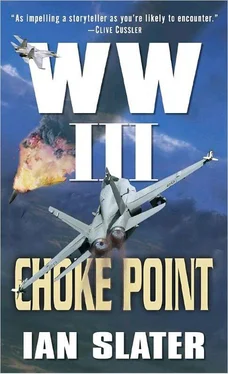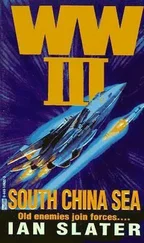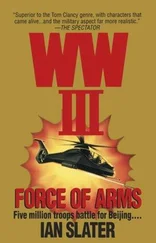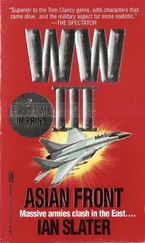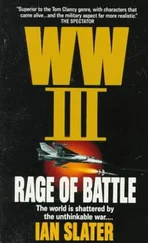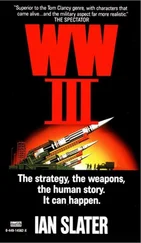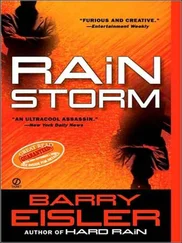“I’ll get it,” said David, subdued, his tone devoid of any trace of sullenness or ill-temper, but characteristically quiet, showing as much concern for the other man’s embarrassment as for his own.
“Oh, sure,” said the driver, stepping back.
First problem: The assault rifle had no mag. Rules of the range: no weapon to be loaded until shooters were in the stalls or on the mound.
But even the simplest job — snapping in the mag — proved harder than David had anticipated. As his sister, an Army nurse, had so often said, “The things you take for granted!” her work with the wounded having relentlessly driven home the point.
The F2000, constructed of molded polymer and modern in appearance, wasn’t a pretty weapon. It was thoroughly ugly, in fact. Though ergonomically correct, its modular design looked more like a child’s stubby gray Lego construction. Despite its aesthetic shortcomings, however, it had been the Bullpup’s carrying handle, allowing the well-balanced Bullpup to be carried with equal facility by left and right handlers, that gave David hope. He should be able to grip the weapon tightly enough, by jamming it between his left arm and side, to control its three-round bursts. After considerable sweat and remonstrations against his dangling, uncooperative right arm, he was able to cradle the weapon for burst fire. Then, in an act of sheer will, using his good left hand to literally drag the dead lump of fingers that had been his right hand across to the front underside and through the loop formed by a half-inch-wide rubber band suspended from the gun’s barrel, he managed to lift the relatively light eight-pound weapon high enough to assume a shoulder firing position, should he be tested for single-shot accuracy.
He fired four three-round bursts from the waist position, the driver watching the man-size target through the range binoculars. While the group of three 5.56mm bullets all hit the target, they were too widespread. Still …
David readied for the shoulder shot, trying gamely to camouflage his pain beneath a forced grin. “Good to be shooting again!” he told the driver.
“Uh-huh.” The driver’s attention had shifted from the line of targets to the arrival of another Humvee. “Son of a — it’s George Patton!”
Freeman, as usual, was well turned out, khaki shirt and trousers immaculately pressed. Together with the snappy peak of his khaki Afrika Korps cap, his gear made him look ten years younger. But the general was not a happy camper, and his driver, loaned by Fort Lewis’s CO, wisely remained in his Humvee. David’s driver came to attention, giving the retired general a smart salute. Freeman returned in kind without breaking stride, as if arriving to inspect the 2nd Army. “A word with Captain Brentwood.”
“Yes, sir,” David’s driver replied, quickly absenting himself, heading toward the other Humvee.
“General?” said David, slipping on the safety.
“We’ve got bad news. You’re a diver, right?”
“Yes, sir.”
“Good. Need your advice.”
That was something David liked about Freeman. He never hesitated to seek the counsel of others — those below him in rank, particularly those who, like him, had been in the field.
“What’s the problem?” David asked, grateful for the chance to lower the 2000, resting it against the gnarled trunk of a ponderosa pine.
“Told National Security Advisor Prenty that maybe the sub had its lair in a cave or some other indentation in the coast from Port Angeles down past Father and Son.”
David knew about Port Angeles, of course, but, apart from the Bible, not Father and Son.
“ ’Father and Son’ are a couple of sea stacks off the Olympic Peninsula’s west coast. I suggested Jensen, COMSUBPAC-GRU-9, run his UAV Darkstar along the coastal sea caves.”
“For IR hot spots,” David said, immediately extrapolating from Freeman’s remark that what would be needed was a diver-capable SpecFor team to either execute a swim investigation or an abseil insertion from a helo, as Brentwood and his team had done in the Hindu Kush.
“Exactly,” confirmed Freeman, his hand flashing out with surprising speed, capturing a fly, which he then flung ferociously against the ponderosa. “Anyway, Darkstar is in pieces. Overhaul. Won’t by flyable till tonight, 2100.”
David glanced at his Swiss issue watch. “That’s only four and a — no, five hours away. Not long.”
The general gave the grunt of a man whose rationality was losing to his impatience. “ Turner ’s battle group — what’s left of it — is still sitting out there in the strait.”
“How many planes’d we lose on the Turner ?”
“A few — none of the fighters, thank God. Hadn’t flown out from Whidbey Island. Carrier only takes ’em aboard once the boat’s clear of the strait and in the open sea.”
“If I were the terrorists, I would’ve waited,” opined David. “Hit the carrier at sea — likely to get most of the fighters in the hangar deck and topside.”
“I agree,” said Freeman, taking off his Afrika Korps cap, running his fingers through a shock of silvery gray hair. The general slapped his thigh with the cap. “Got any ideas of what to do while we’re sitting on our bums waiting for Darkstar to be reassembled?”
“Hovercraft,” said David. “They’re equipped with IR scopes for night searches. Helos too — but I’d go for the hovercraft. Low flying helos — even by pilots from the Coast Guard familiar with the coasts — aren’t as good as hovercraft. Hovers are at eye level with any cave or indentation. Helos have to avoid sea stacks. Especially hard to see at night.”
Freeman nodded in full agreement, already striding back to his Humvee, grabbing its phone. Coast Guard HQ in Seattle told him they could let him have three hovercraft, the remainder of the squadron still busy searching for survivors among the more than 389 MIAs still unaccounted for.
“When?” asked the general over the phone.
“We’ll need authorization from Admiral—”
“Hey!” David could hear the general’s sharp retort. “You jokers listen to me. We’ve lost a Nimitz carrier, a state-of-the-art Virginia, and most of the people aboard them, and you want some goddamn piece of paper so you can go look for the sons of bitches who did this? If we lose any more because you—”
“Orders are going out now, General,” cut in the duty officer’s voice. “As we speak .”
“Good, I’ll need real-time digital feed of any hot spots the hovercraft get on their video.”
“No video, I’m afraid, General. Strait’s too rough.”
Like most people who hadn’t ridden aboard one, the general, despite his extensive military exposure, harbored the illusion that a hovercraft traveled smoothly over the water on the air cushion.
“Well — hell, then, have them notify me if they see anything that looks suspicious.”
“Roger.”
“Let’s hope,” Freeman told David when he put down the phone, “that nothing hits the fan between now and midnight.”
“Amen to that,” said David. Having rested during Freeman’s tête-à-tête with the Coast Guard, he now clicked a new mag into the F2000, keen to show his old boss just how well he could handle the Bullpup with one good arm.
Freeman, eschewing any of the ear protectors in the stalls, plugged his ears and shouted, “Go!” upon which David unleashed three bursts, all on target, if the target had been a barn door. Certainly nowhere near a sufficiently tight group for the SpecOps qualification.
“How about the grenade launcher?” Freeman asked casually as he lifted the rope-secured range binoculars and studied the grouping.
David had been so intent on overcoming the problem of firing the F2000 with one arm, he’d forgotten about the grenade launcher. It was the essential clip-on module for anyone using the assault weapon, for anyone in a SpecFor group.
Читать дальше
